Chelsea Flower Show 2025: Ten things not to miss in what promises to be a superb year at the world's greatest horticultural show
It promises to be a stellar year at the RHS Chelsea Flower Show. Kathryn Bradley-Hole previews some of the highlights you can expect, while we take a look ahead to what Country Life will be up to during the week.
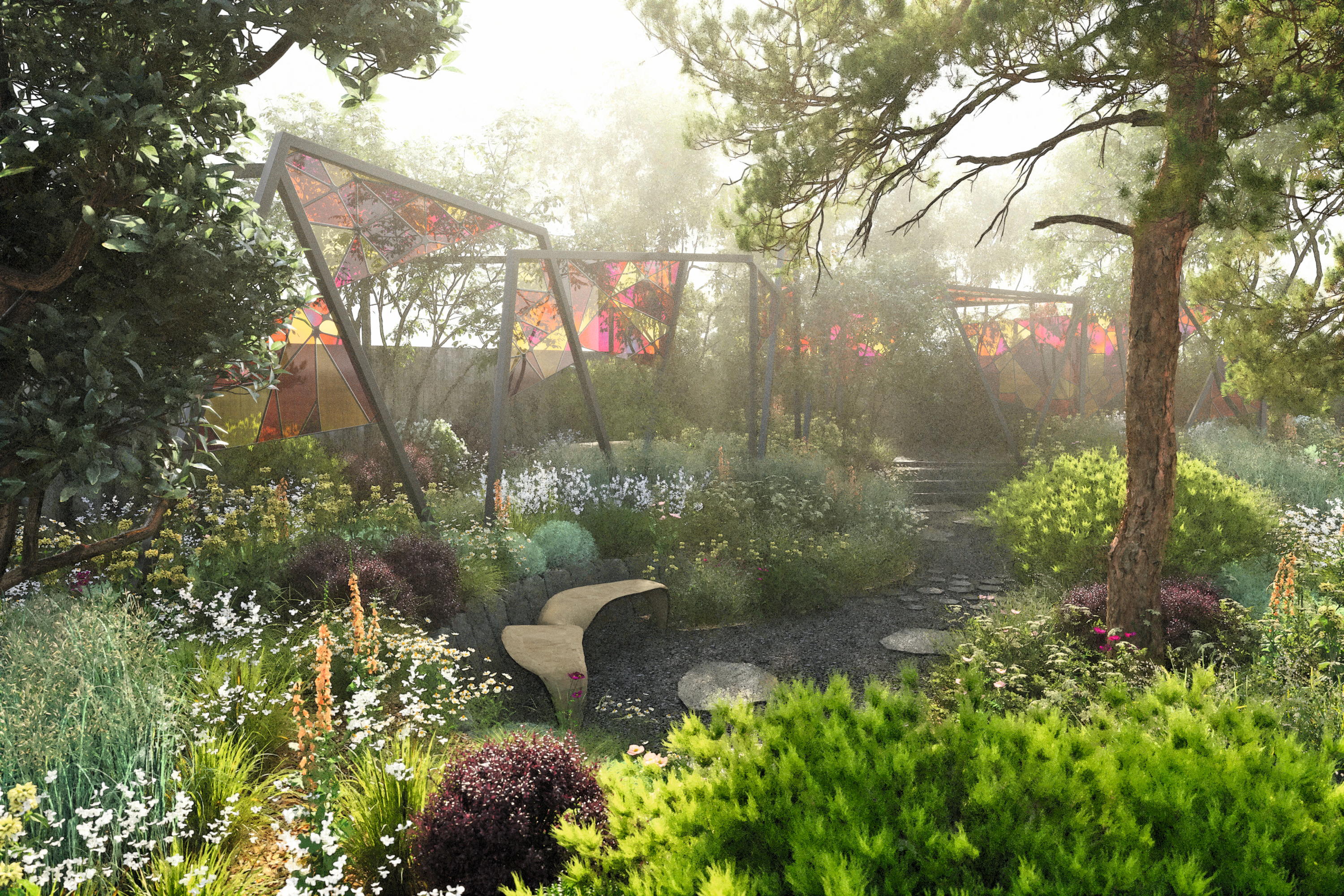

Country Life will be reporting all week from the 2025 Chelsea Flower Show — and you can come and meet the team at stand PW210, where you'll find our 'outdoor drawing room' designed by Isabella Worsley.
- From Monday, on the website, Instagram and our other social channels, we'll share pictures from around the show (including Country Life's stand), and Chelsea as a whole, where local residents and business owners get in to the spirit with the 'Chelsea in bloom' event.
- On Tuesday you can read all about every single medal winner from the show, while we'll also share our pick of some of the most exotic and extraordinary things from around the event: the most beautiful blooms, unusual furniture, famous faces and much more. On Wednesday we'll bring your our own entirely unofficial Country Life Chelsea Flower Show awards, which take an alternative (and quite probably more practical) look at the garden ideas on show. Our gardens editor Tiffany Daneff will also be bringing her report from the Great Pavilion, the marquee at the heart of RHS Chelsea.
- Then throughout the rest of the week we'll bring you more of the sights, sounds and stories of the show — including a look at how the exhibitors manage to get all their flowers peaking at exactly the right moment.
- And finally, once the dust has settled, taking a look at what happens to the beautiful gardens of the Chelsea Flower Show when it's all done and dusted.
What not to miss at the Chelsea Flower Show
The tidal Thames ebbs and flows past the southernmost gate of Chelsea’s Royal Hospital and you might be forgiven for imagining a whiff of salt and bladderwrack. No need, however, to look to the grand river, with its pleasure boats and busy barges. Coastal-themed gardens are as rare as hen’s teeth at Chelsea, but, like the proverbial London bus, several have turned up at once in 2025.
Each maritime evocation is very different from the next, yet highlights various aspects of Britain’s own coastline. None of them relies on familiar stage props, such as lifebelts, fishing nets and lobster pots; the ecological garden has come of age and they are exclusively habitat-led. Most striking, perhaps, is the Hospitalfield Arts Garden — and that's where we'll start our preview.
The Hospitalfield Arts Garden, presented by Nigel Dunnett
At the Hospitalfield Arts Garden, presented by Nigel Dunnett, ribbed, stylised ‘sand dunes’ rise out of the site like a scattered herd of giant armadillos. They suggest, imaginatively, the dunes of Arbroath, on Scotland’s east coast, from where distant cetaceans might be spotted breaching the cold waters of the North Sea. Appropriately for an Arts-centre sponsor, the dunes cluster around an artist’s studio, flanked by gnarled, windswept trees of the locality, such as Scots pines, contorted junipers and multi-stemmed Arbutus unedo.
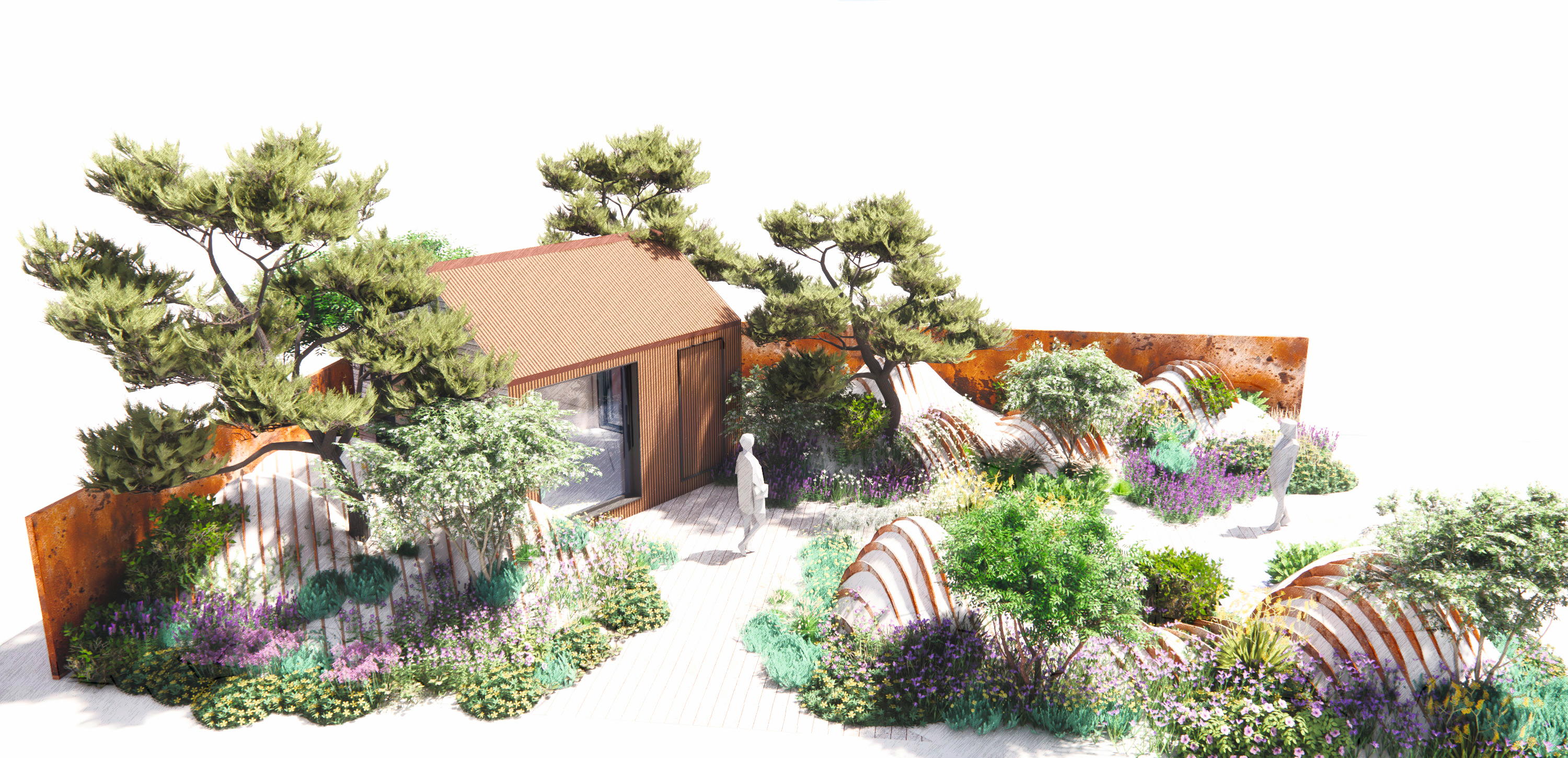
Drifts of coastal plants flower among stylised sand dunes in a reimagining of the dunes of Arbroath in The Hospital-field Arts Garden by Nigel Dunnett.
Mr Dunnett, the grand master of ecological planting, has arranged drifts of familiar coastal plants, including pink tamarisk, sea thrift and blue-grey dune grasses, around more dramatic and exotic anchors, such as honey spurge Euphorbia mellifera and Geranium palmatum, an imposing, large-leaved species from Macronesia.
The Seawilding Garden by Ryan McMahon
At the Seawilding Garden by Ryan McMahon, we’re still with the Scottish seashore — this time, on the west side. Evoking the marine environment of Loch Craignish in Argyll (a haunt of summer whales, dolphins, otters and eagles), this nicely balanced, boulder garden has an ace up its sleeve. It is the first exhibit to feature undersea plants — the seagrass Zostera marina — that will be returned to the ocean floor after the show.
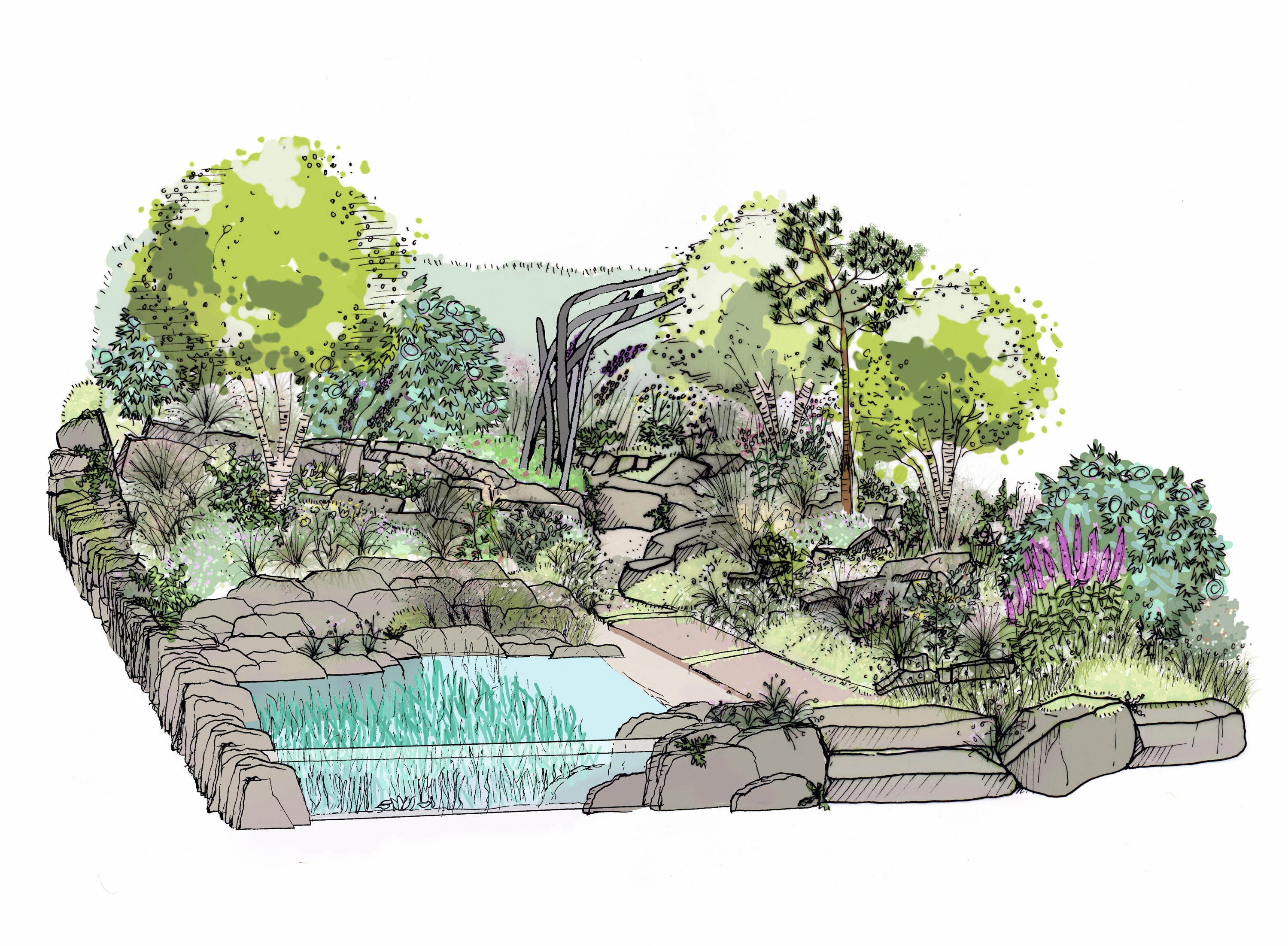
The Seawilding Garden by Ryan McMahon is the first to include the seagrass Zostera marina, which will be returned to the ocean after the show.
For their London debut, a salty pool has been created, with a viewing window on one side, revealing the seagrasses swaying about, nurturing a restoring population of native oysters.
Exquisite houses, the beauty of Nature, and how to get the most from your life, straight to your inbox.
The Addleshaw Goddard Freedom to Flourish Garden by Joe and Laura Carey
It was the tide itself, lapping into the saltmarshes of Norfolk, that inspired designers Joe and Laura Carey for The Addleshaw Goddard Freedom to Flourish Garden. A rising ‘tide’ of fresh water turns part of their garden into a temporary ‘island oasis separated from the turbulence of everyday life’. I like this dynamic use of water, which alters the character of the garden, before restoring its established layout when the ‘tide’ ebbs.
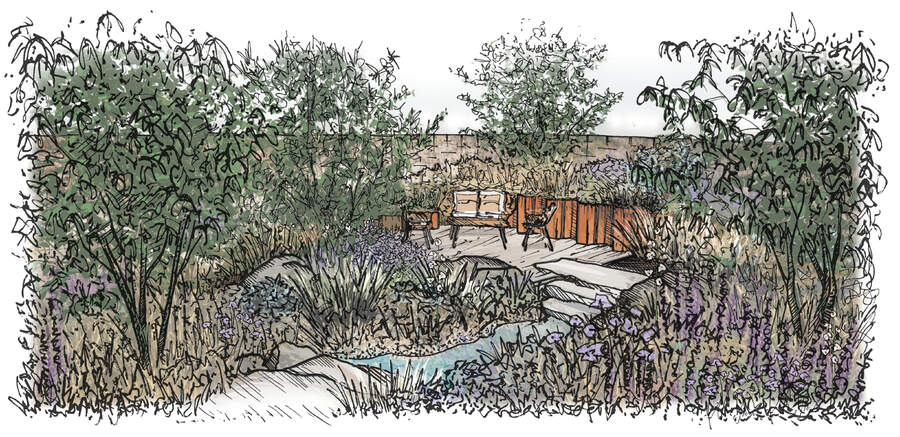
The tide changes the garden with the passage of time at The Addleshaw Goddard Freedom to Flourish Garden.
Gabion walls, with layers of flint boulders, suggest eroding cliffs. The planting is pretty and abundant, with magenta sea thrift, pastel poppies, blue-violet baptisia, purple phacelia, apricot evening primroses and the large, rose-pink daisies of Erigeron glaucus ‘Sea Breeze’. This exhibit will be a crowd pleaser.
The Boodles Raindance Garden by Catherine MacDonald
Water is key to the Boodles Raindance Garden by Catherine MacDonald. Celebrating the 25th anniversary of the jewellery brand’s Raindance collection (featuring contiguous diamonds in circular bezel settings), the garden is navigated via a series of round paving pads, flanked by circular ponds, amid abundant woodland-edge planting.
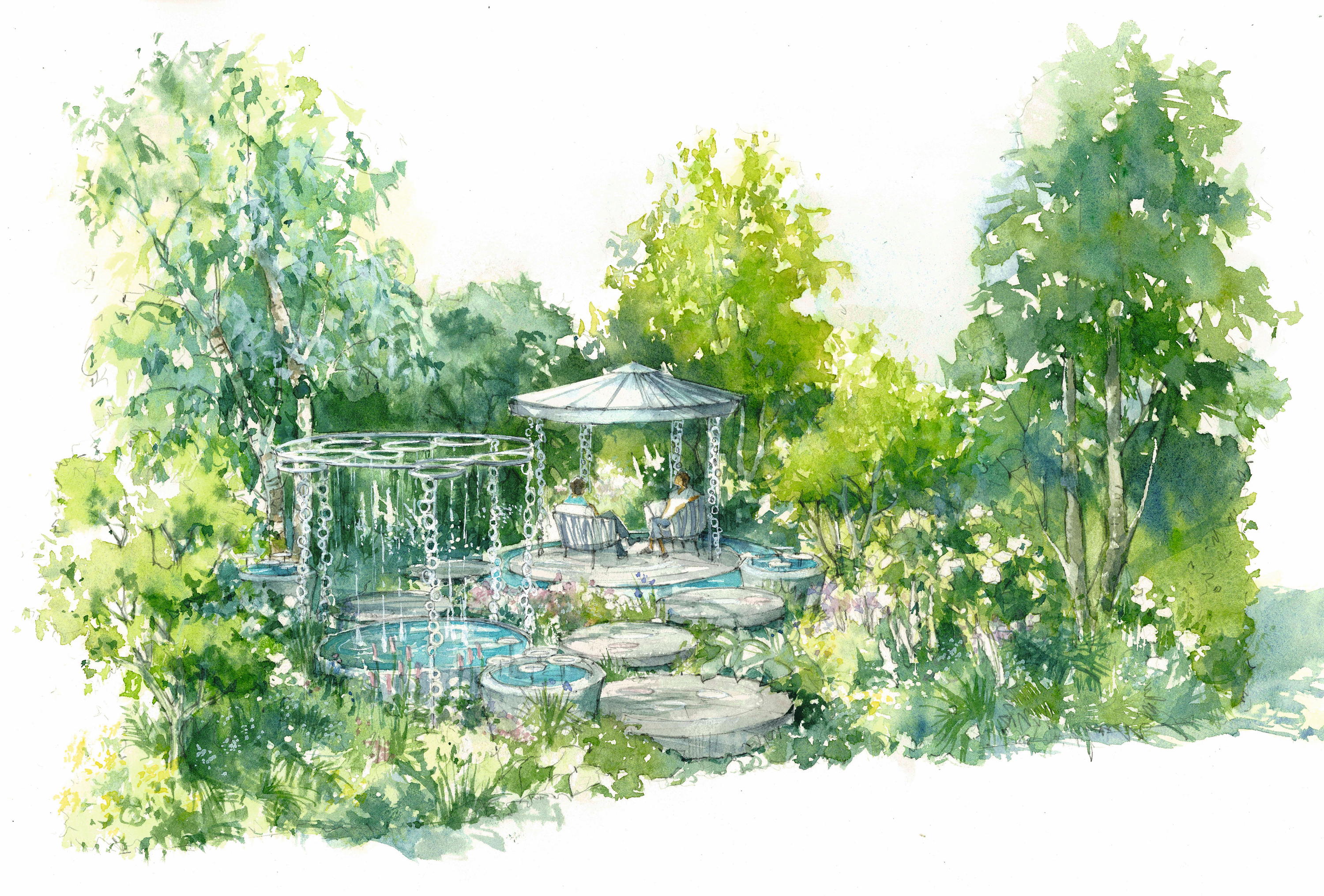
Round paving slabs echo the round ponds surrounded by lush woodland planting in The Boodles Raindance Garden by Catherine MacDonald.
The fluted roof of a focal-point pavilion channels rainwater into an encompassing rill at ground level. With birch and maple trees and herbaceous flowers, it reflects the sponsor’s commissioned theme, but also works as an inviting garden.
The King’s Trust Garden: Seeding Success, by Joe Perkins
Volcanic landscapes — so many of which have, themselves, been thrust out of the depths of the seabed — are the inspiration for The King’s Trust Garden: Seeding Success, by Joe Perkins, which is our lead picture at the top of this page. The resulting dark basalt found in such places is a great foil for showing off the freshness and vitality of May-time foliage and flowers.
A post shared by The Landscaping Consultants (@tlc.uk)
A photo posted by on
The designer’s stated focus is on pioneer plants, which seed and establish themselves in an inhospitable, rocky terrain. Choice examples include the Mexican tulip poppy Hunnemannia fumariifolia, Molopospermum peloponnesiacum (a shaggy, mountain hemlock with striking, angelica-like flowers), euphorbias and the charming alpine storksbill, Erodium chrysanthum.
Elevated panels of stained glass in hot, volcanic colours are an interesting addition, bringing a different dimension to the garden in sunny moments. This exhibit will particularly appeal to alpine and rare-plant enthusiasts.
The Glasshouse Garden, by Jo Thompson
Woodland settings dominated last year and there are many again this year. Among them, multi-stemmed river birches Betula nigra cast pools of dappled shade on The Glasshouse Garden, by Jo Thompson.
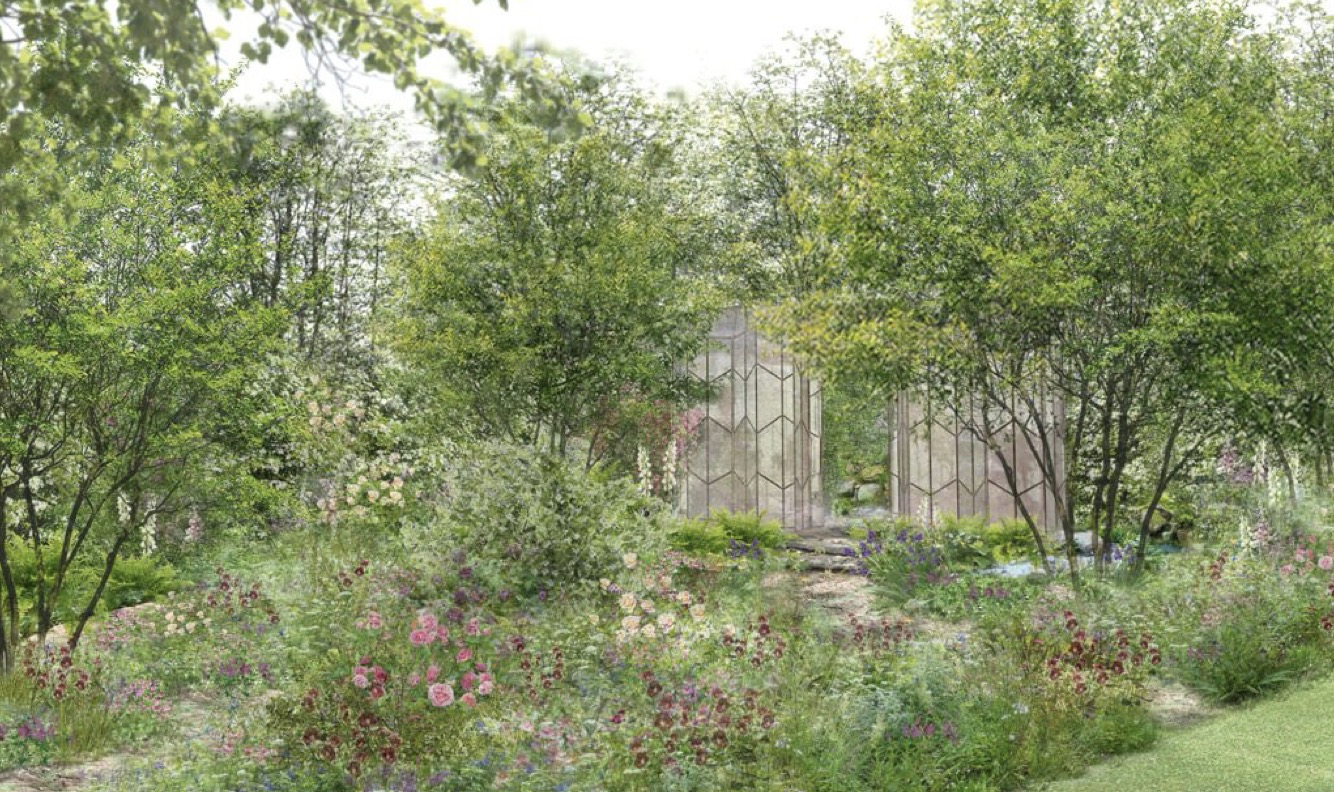
The Glasshouse Garden by Jo Thompson returns opulent beds of roses to the show, with time-honoured classics and new varieties.
Winding paths enable consideration of alluring beds filled with roses in rich reds and pinks, including top-drawer old varieties, such as claret ‘Tuscany Superb’ and crimson-purple ‘Charles de Mills’, alongside English Roses from David Austin.
The Hamptons Komorebi Garden, by Masa Taniguchi
Although many of the show gardens exhibit beautiful, spreading trees, there is also room for multum in parvo. The Hamptons Komorebi Garden, by Masa Taniguchi, is a small courtyard planted with a mini forest of silver birch Betula pendula, set against a dark background.

The Hamptons Komorebi Garden by Masa Taniguchi is inspired by komorebi, the Japanese word describing the dappled sunlight below tree canopies
It draws upon komorebi, a Japanese word describing the way sunlight pierces a tree canopy, creating dappled shade. A wooden platform serves as a day bed, on which to lie down and stare up, contemplating the changing patterns of light. We must hope the sun keeps shining, to get the full effect of komorebi.
The Wildlife Trusts’ British Rainforest Garden, by Zoe Claymore
Full-on forestry characterises The Wildlife Trusts’ British Rainforest Garden, by Zoe Claymore. With bluebells, mossy logs, silver birches and spreading hazels, it evokes the ‘wild and wet woodlands’ of the British west coast, referencing west Wales and the south-western extremities.
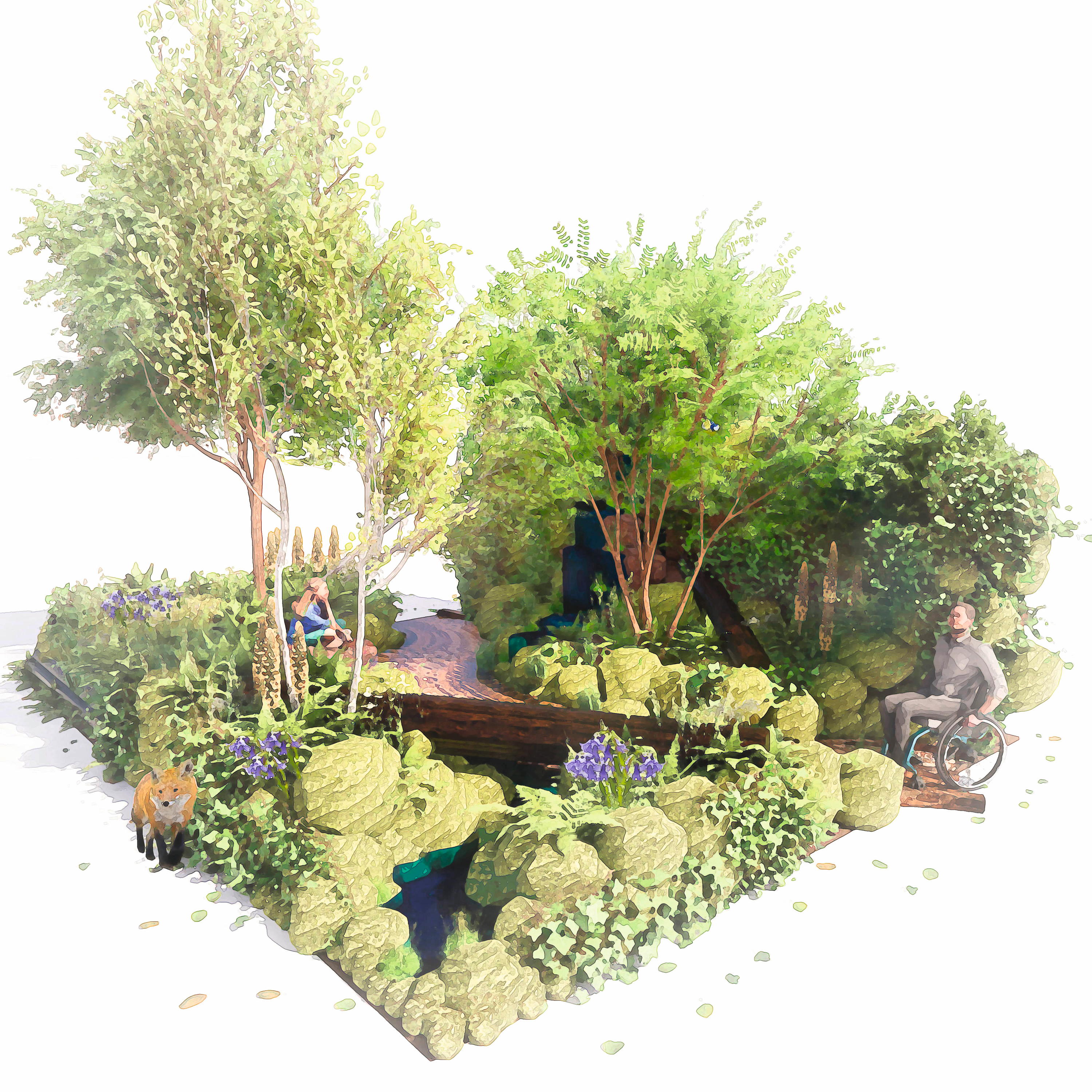
The Wildlife Trusts’ British Rainforests Garden by Zoe Claymore evokes the west coast of Britain, with bluebells, silver birches, mossy logs and hazels.
Indeed, it takes us back to the sea again (the lonely sea and the sky). After years of absence, ‘the call of the running tide’ is by far the strongest, but least predicted, influence at this year’s show.
And why not? We shall all have a whale of a time.
RHS Chelsea Flower Show, May 20-24 (members only, May 20-21), Royal Hospital Grounds, London SW3. The Country Life ‘Outdoor Drawing Room’ is at stand PW210 (www.countrylife.co.uk; www.rhs.org.uk)
Two things not to miss in The Grand Pavilion
In a first for the Chelsea Flower show, The Newt in Somerset, RHS Chelsea’s headline sponsor, brings a genuine Karoo Succulent Garden to the heart of London. The magnificent display will showcase the beauty and resilience of indigenous succulents found in South Africa’s Karoo, set among rock formations that evoke their natural, desert habitat. The rare specimens on show are drawn from 15 plant families, including flora from Namaqualand and the south Eastern Cape.
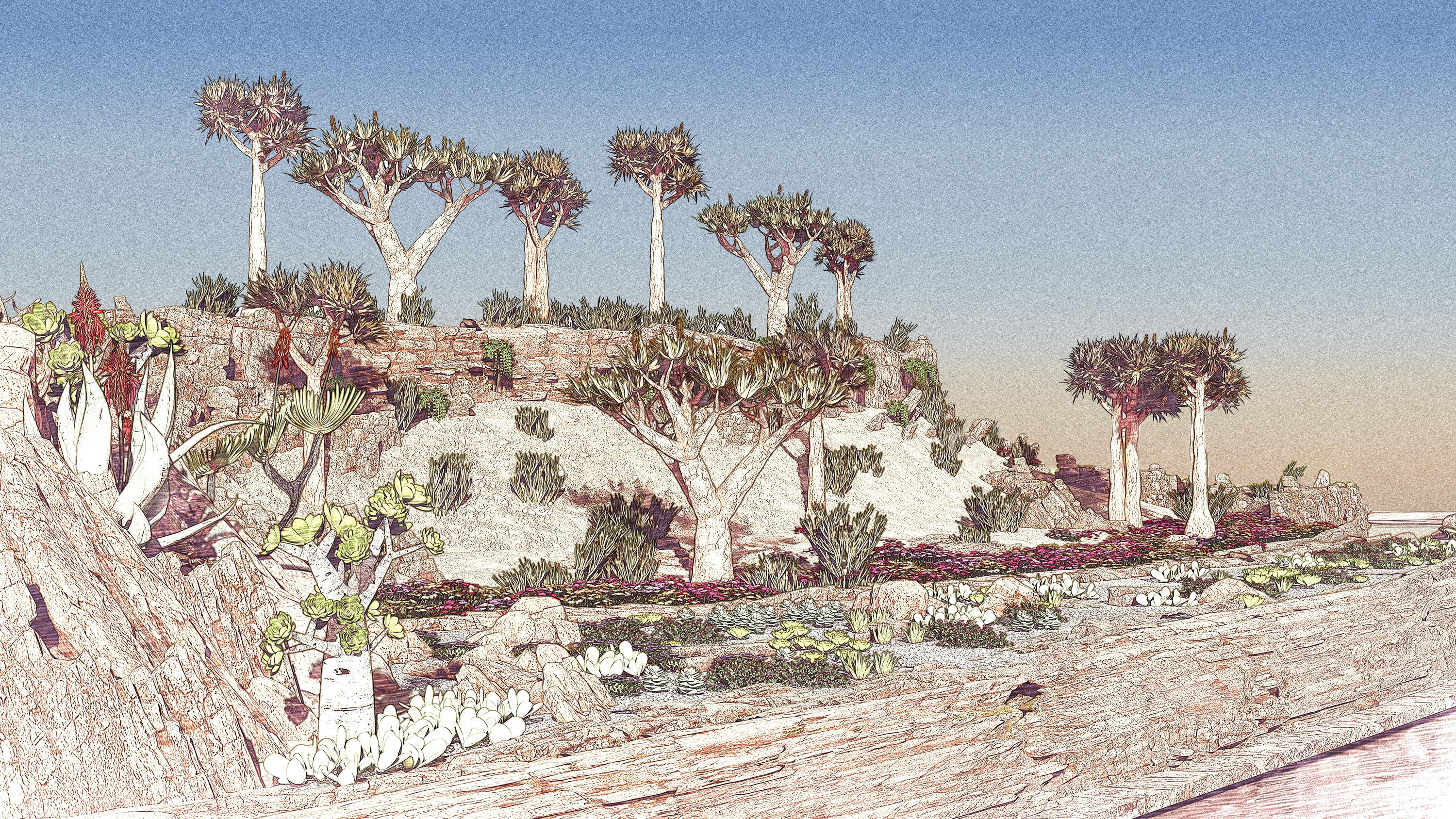
The Newt — RHS Chelsea’s headline sponsor — are bringing a Karoo Succulent Garden to the heart of London.
Expect exceptional creative floristry in the RHS Chelsea Florist of the Year contest. Florists’ chosen topics include aspects of the moon, the Northern Lights, British rivers, a calming forest and the laborious work of the silkworm. As always, it'll be unmissable.
As for the flowers you'll see most of? Bearded irises will be well represented in 2025. Sarah Cook brings a display of her unique National Collection of Cedric Morris irises, including Iris ‘Benton Lorna’ raised in the mid 20th century by the artist at his Benton End home in Suffolk.
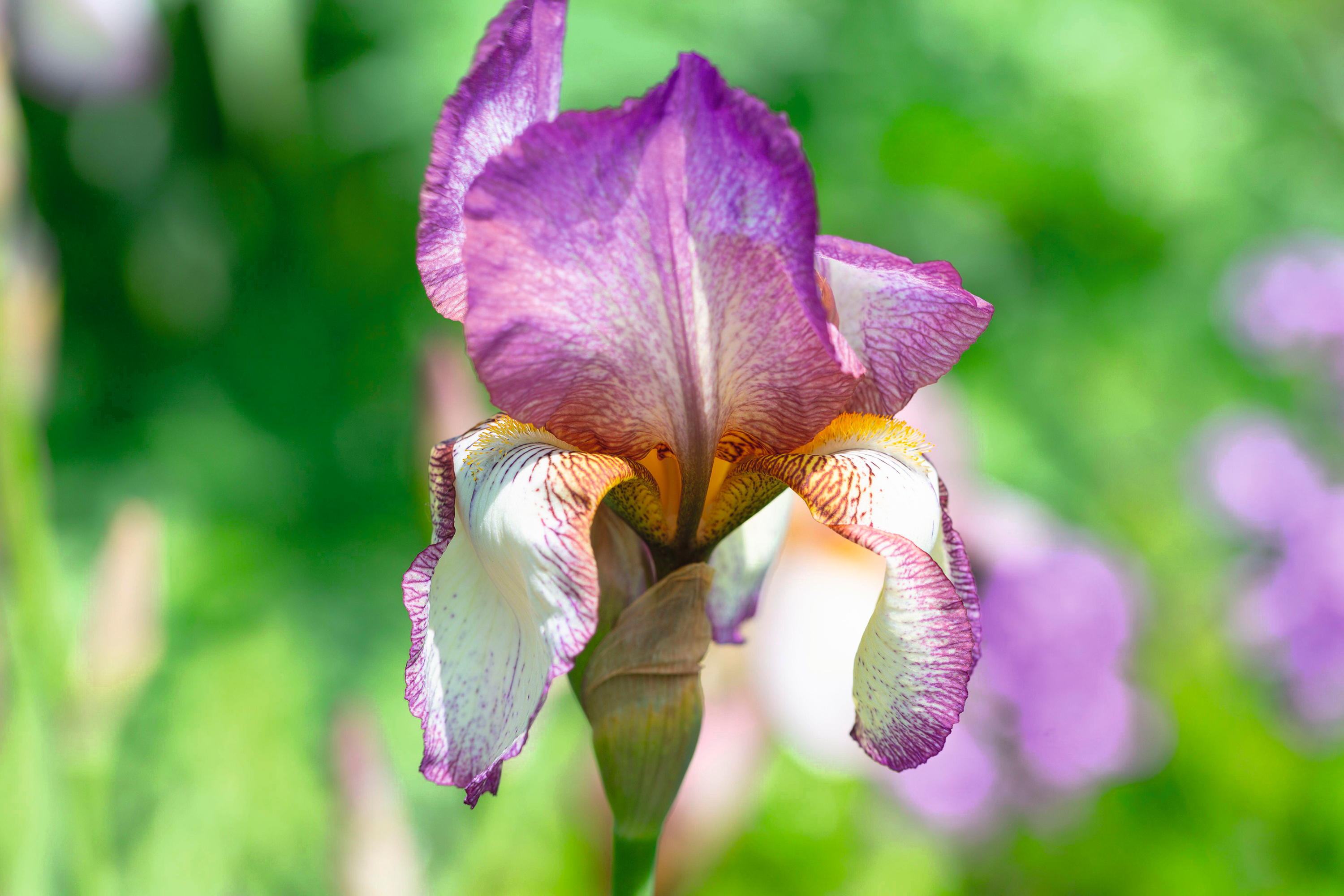
Iris 'Benton Lorna' will be on display in SW3.
Cherished for their exceptional colours, many have delicate, watercolour tints and vintage character. In contrast, Claire Austin’s irises exhibit includes many modern varieties, often with colour contrasts and frilly-edged petals. There’s surely an iris to suit everyone at this year’s show.
To celebrate Country Life's return to the Chelsea Flower Show, we're offering up to 40% off subscriptions to Country Life Magazine. It's our best offer ever; available until June 30, 2025.
-
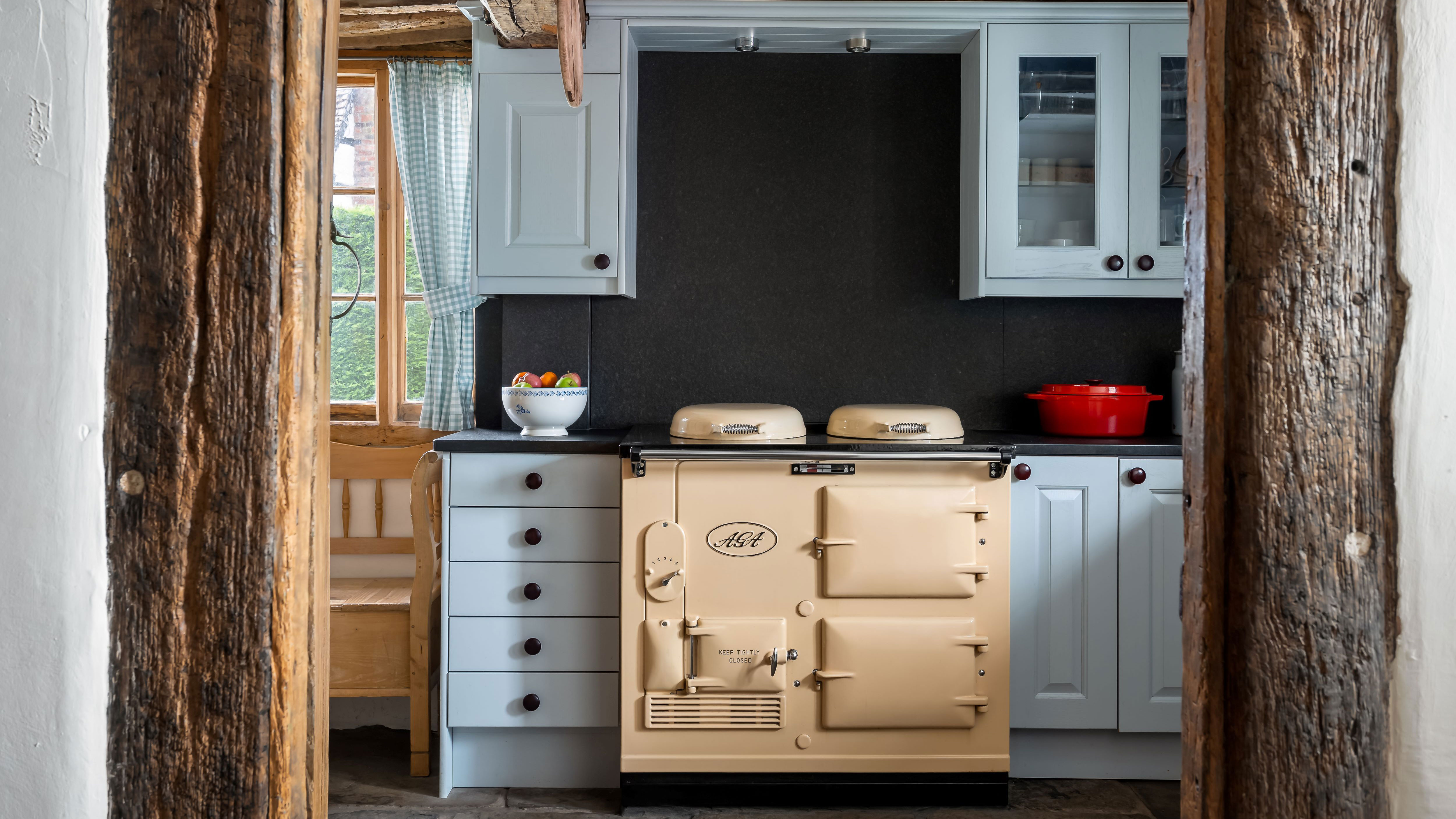 It'd be crazy to buy this 500-year-old farmhouse just because of its utterly gorgeous Aga — so thank goodness that the rest of this place is also really nice
It'd be crazy to buy this 500-year-old farmhouse just because of its utterly gorgeous Aga — so thank goodness that the rest of this place is also really nicePerry Mill Farm is an immaculate yet characterful four-bedroom dream home in the country at a price that will make city dwellers immediately start Googling 'working from Worcestershire'.
-
 What is a boilie and what does it do? Discover this and other useful knowledge in the Country Life Quiz of the Day, December 3, 2025
What is a boilie and what does it do? Discover this and other useful knowledge in the Country Life Quiz of the Day, December 3, 2025Boilies, Stephen King, Scottish rivers, pink houses and some other stuff. Best get your quiz on.
-
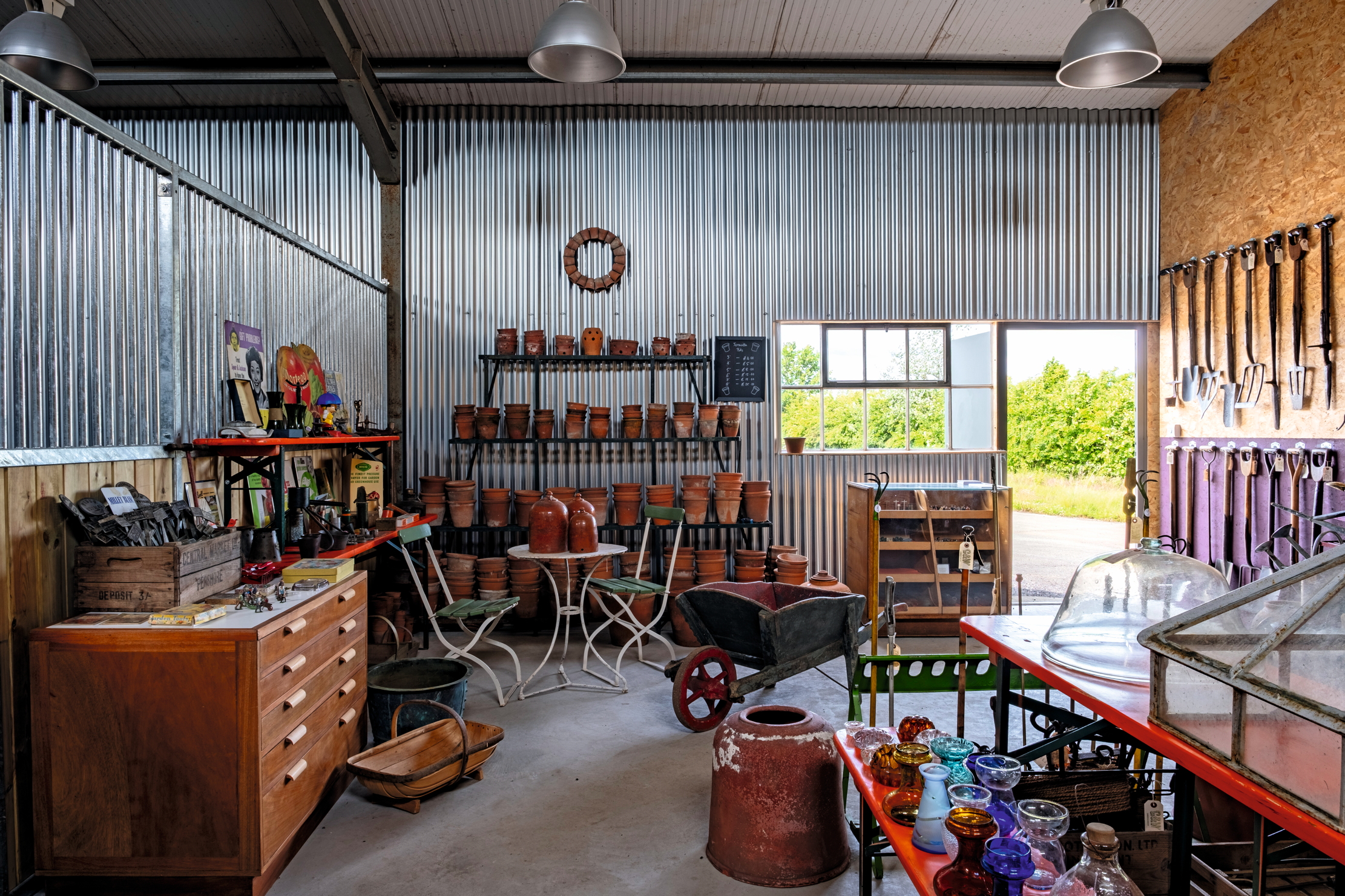 When it comes to making the perfect garden tool, the past has all the answers
When it comes to making the perfect garden tool, the past has all the answersMary Keen visits Garden & Wood, the mecca for dedicated gardeners who prefer using tools made in the 1940s
-
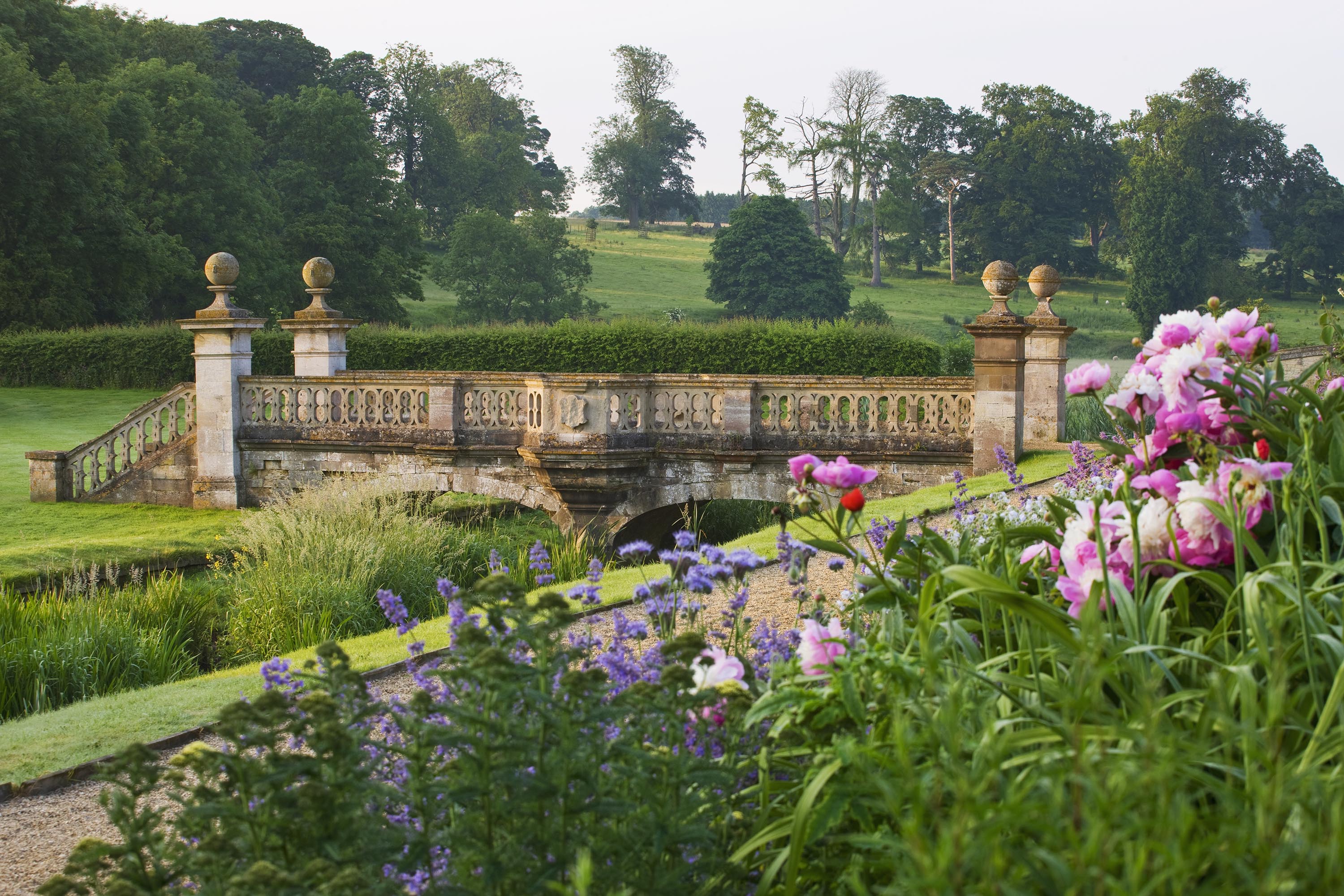 'A dream of Nirvana... almost too good to be true': The sweet peas of Easton Walled Gardens, and how you can replicate their success at home
'A dream of Nirvana... almost too good to be true': The sweet peas of Easton Walled Gardens, and how you can replicate their success at homeUrsula Cholmeley, who has spent 25 years restoring Easton Walled Gardens, recommends sowing sweet peas now for stronger plants that will better withstand the weather.
-
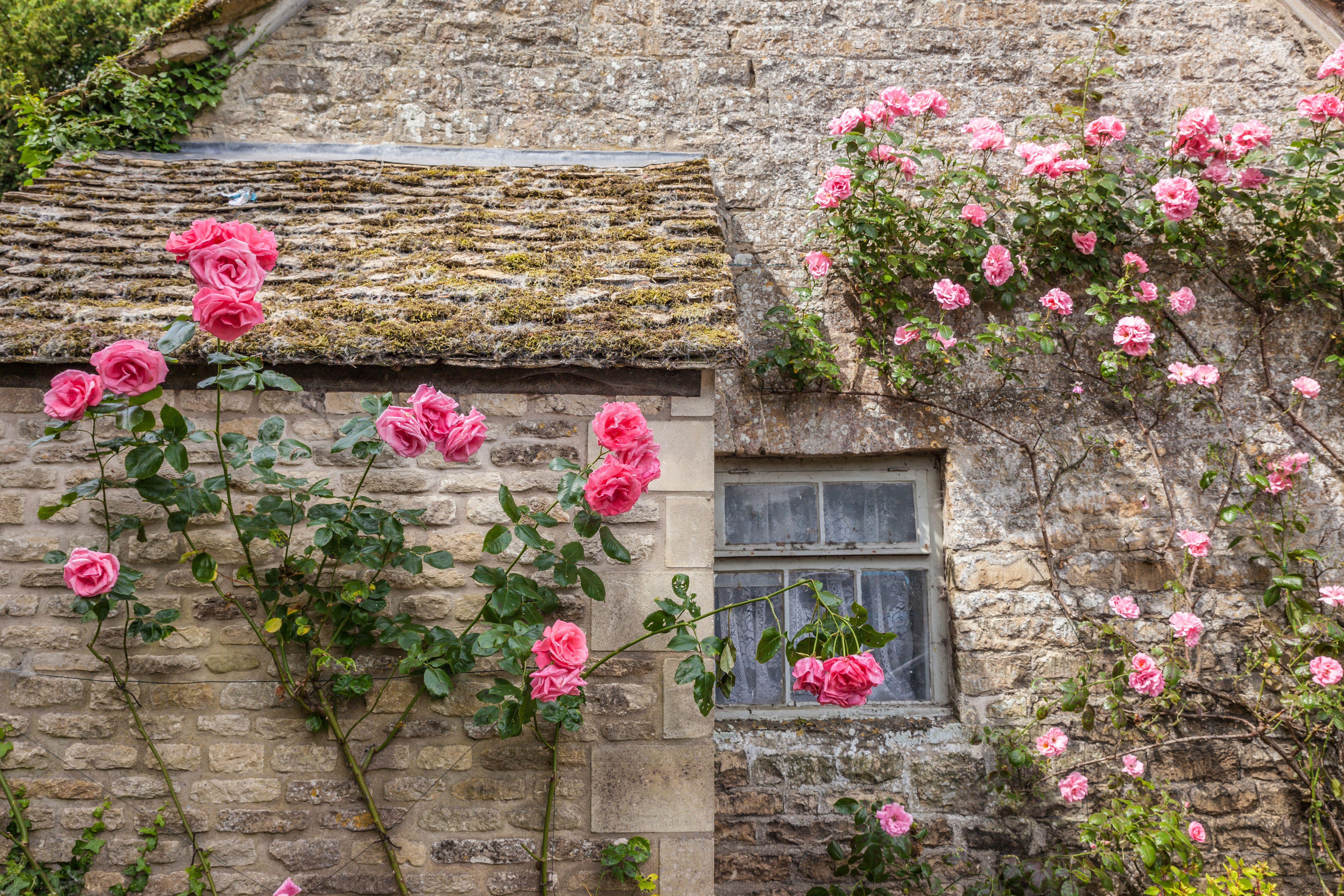 How to choose the perfect rose this bare root season
How to choose the perfect rose this bare root seasonLooks can be deceiving: bare root roses are hardier and more sustainable than potted ones, says Tabi Jackson Gee, who moved to a cottage in Wiltshire and went about finding the perfect plant. You just need patience.
-
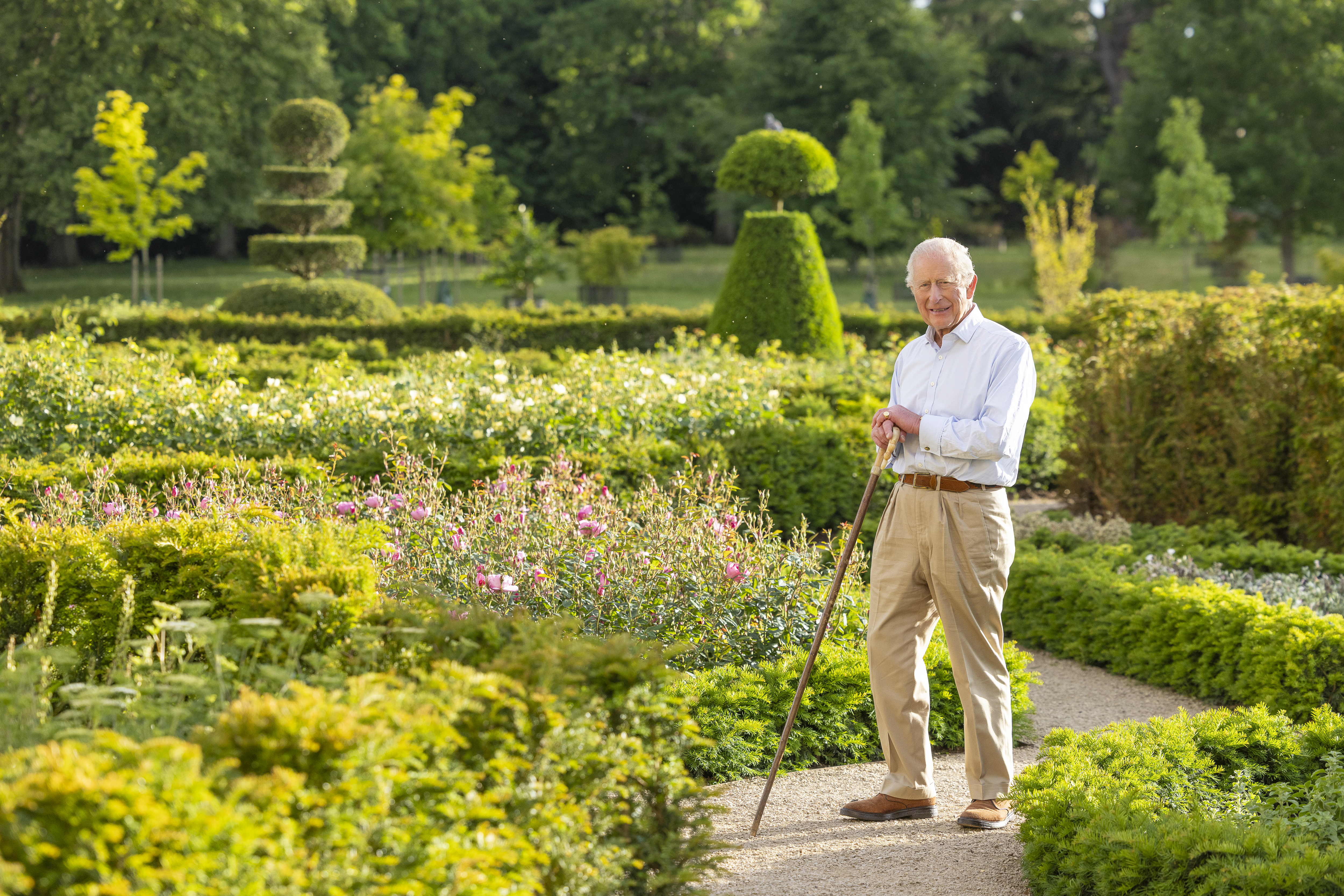 Exclusive: The King's remarkable resurrection of the gardens and parkland at Sandringham
Exclusive: The King's remarkable resurrection of the gardens and parkland at SandringhamThe King took over the running of the 21,000-acre Sandringham estate in 2017 — and in the last three years has transformed it beyond recognition.
-
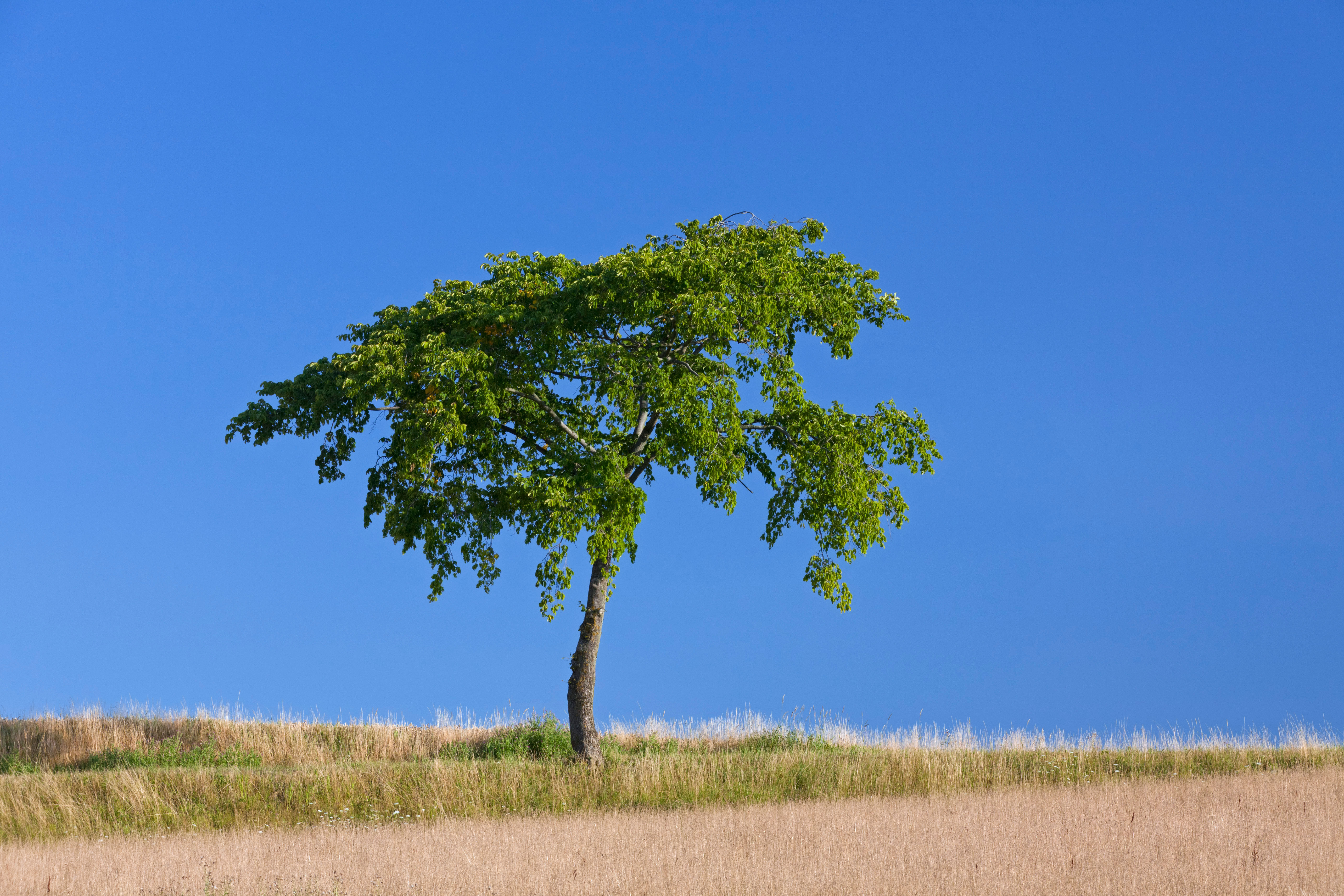 The trees that are as fine to eat as they are to look at
The trees that are as fine to eat as they are to look atMark Diacono doesn't grow many trees for the sake of the bounty they provide — but these are the notable exceptions.
-
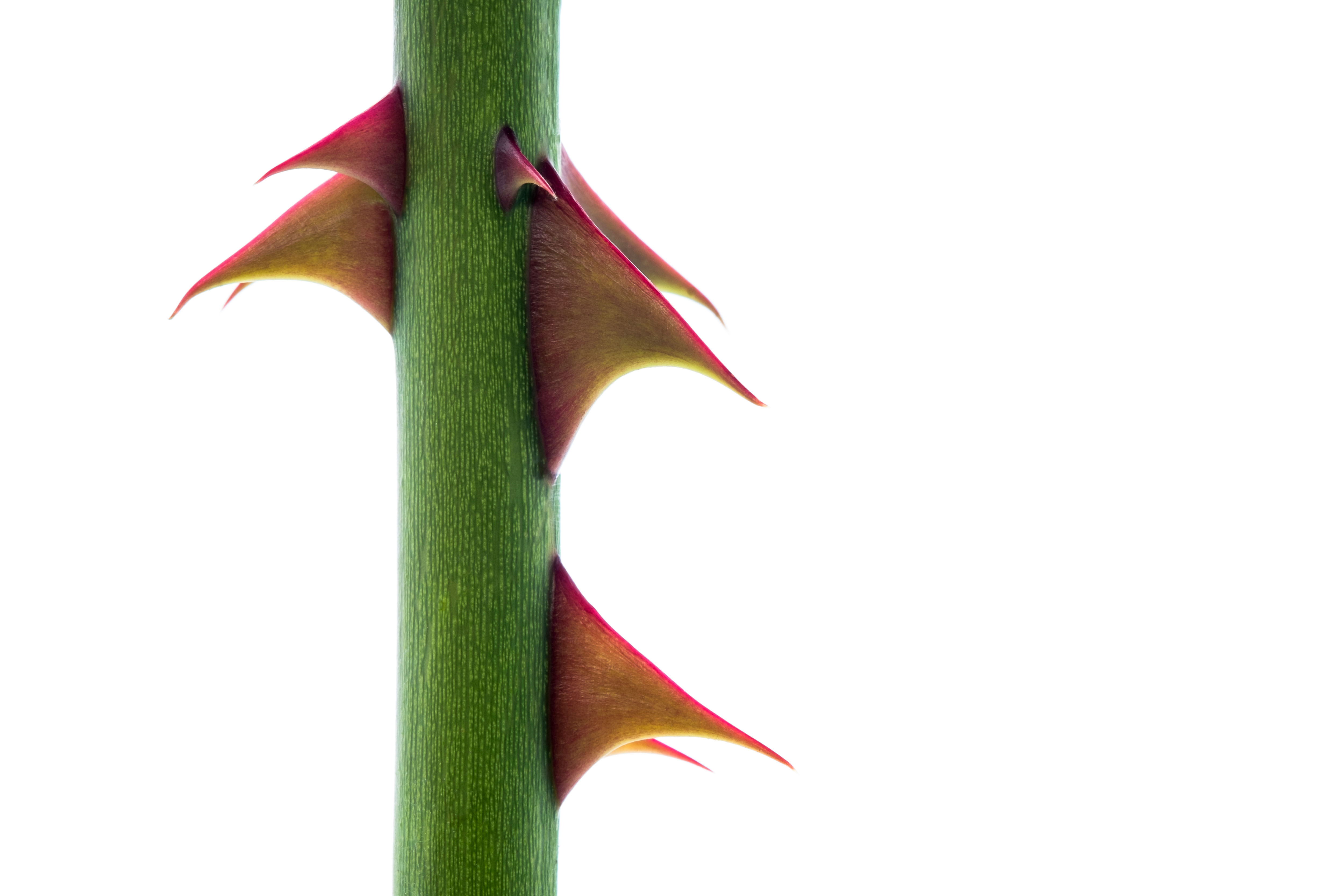 Bothered by brambles and snagged by sow thistles, but what is the point of all this thorny microaggression?
Bothered by brambles and snagged by sow thistles, but what is the point of all this thorny microaggression?Nature’s spiky deterrents — thorns, spines and prickles — may be quick to catch us out, but they can also prove to be a useful ally.
-
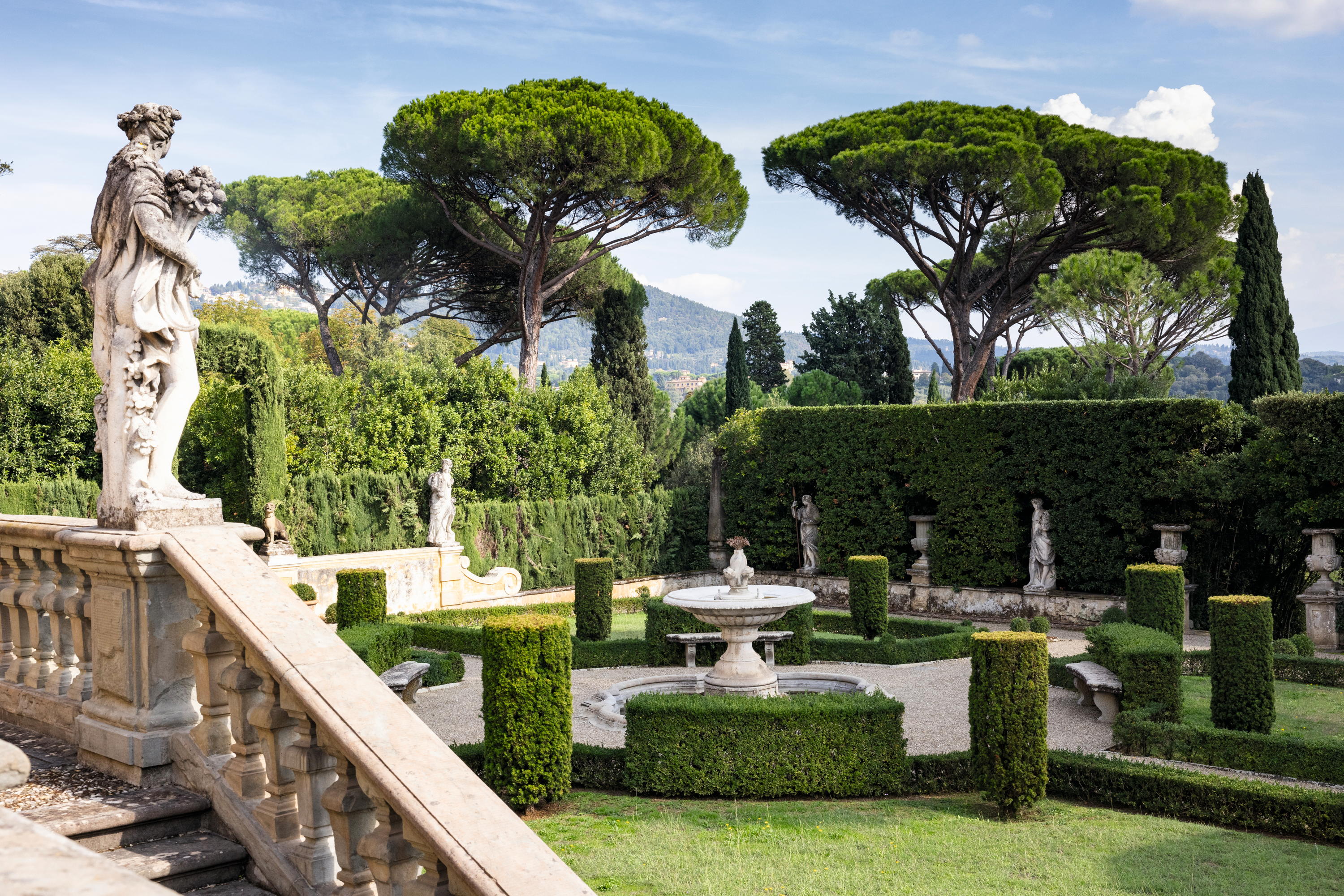 The Tuscan gardens where the English and Italian traditions come together, and Yorkshire rhubarb grows happily beside spectacular citrus
The Tuscan gardens where the English and Italian traditions come together, and Yorkshire rhubarb grows happily beside spectacular citrusNick Dakin-Elliot, who gardens in Tuscany, is still moved by the Italian hilltop gardens that command some of the most beautiful views in the world.
-
 'My family wore wool at a time when everyone else had cast it off in favour of manmade fabrics': The knitwear pioneer who is one of David Beckham's countryside champions
'My family wore wool at a time when everyone else had cast it off in favour of manmade fabrics': The knitwear pioneer who is one of David Beckham's countryside championsJulie Harding speaks to Rachel Carvell-Spedding the founder of British knitwear brand Navygrey, and one of David Beckham's countryside champions.
